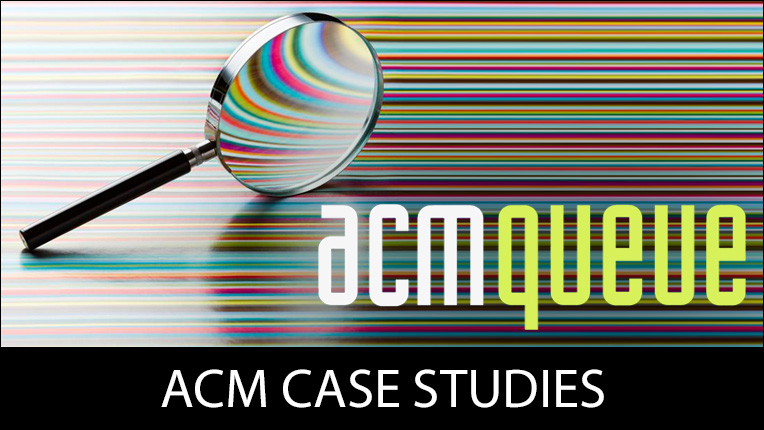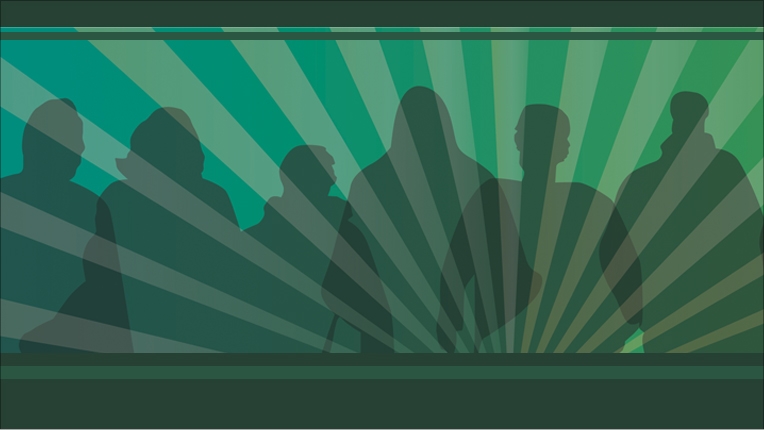New Telepresence Initiative Will Enable Remote Participation in CSCW 2016
ACM’s Annual Computer Supported Cooperative Work and Social Computing (CSCW) Conference will take place this year in San Francisco from February 27-March 2. CSCW is the premier venue for presenting research in the design and use of technologies that affect groups, organizations, committees and networks. As part of its new Telepresence initiative, a select group of participants will be able to participate in the conference remotely using Beam Pro robots from Suitable Technologies.
Each robot consists of an eye-level video conference screen and camera that is fastened to a small battery-powered cart. Remote participants will be able to drive robots throughout the entire CSCW conference venue using their mouse, their keyboard or an X-box controller. The robots can move at up to 2 mph, pivot 360 degrees, and will allow remote participants to attend talk sessions and mingle in common areas between talks. As Telepresence is an exploratory initiative, CSCW organizers will be asking remote attendees to participate in user studies describing their experience.
In this article the CSCW Telepresence Co-Chairs, Carman Neustaedter of Simon Fraser University and John Tang of Microsoft Research, discuss the thinking behind the new initiative and some desired outcomes.
1. What was the impetus for CSCW planners to offer a Telepresence option as part of this year’s conference?
Telepresence technologies have reached new heights in recent years and present many new opportunities for people to attend conferences from remote locations. This is coupled with the desire to help alleviate some of the challenges that may make it difficult for some people to attend international conferences like CSCW. Such challenges include accessibility issues, travel costs, family situations, and limited time. CSCW is a terrific venue for exploring telepresence as an attendance option since much of the early work in the field focused around connecting individuals who were distributed across locations.
We previously had a similar telepresence setup at ACM’s International Conference on Ubiquitous and Pervasive Computing 2014 which was jointly held with the International Symposium on Wearable Computings 2014. The feedback we received from remote attendees at this event was very positive and we wanted to continue the efforts at another ACM conference as an additional testbed.
2. How, is it believed, that Telepresence will foster greater accessibility?
Telepresence opens up the ways in which people can participate in an academic conference. We are going to be using BeamPros at CSCW, which will permit remote attendees to move around the conference venue, interact with other attendees, and attend workshops, conference talks, and even the conference reception. People who face challenges in attending conferences like CSCW should experience a new way to be present.
3. In addition to fostering accessibility, what implications might the Telepresence initiative have for how groups and organizations might better use technology to support work?
Telepresence will make it so more people are able to attend conferences like CSCW. It removes pressures like time and cost, and can make it so people who have mobility or health issues can experience the conference in a location more conducive to their situation. There are also other sometimes ‘last minute’ issues that make it hard to travel to a conference - a Visa application may not get approved, a flight could get cancelled, or a new baby might arrive. Unexpected situations in life happen and telepresence offers a possible solution to navigating these instances of everyday life.
4. Despite the range of the Beam Pro robots, what, do you believe, are some benefits that can only be gained by being at the conference in person?
Naturally we don’t want everyone at a conference to be remote and using a telepresence robot. There are certainly advantages to being there in person. It is somewhat easier to network and move around in person, and you can more easily present yourself in person through the way you dress, act, and behave. Telepresence robots are somewhat generic in how they appear. For this reason, we’re going to be spending considerable time at CSCW to allow the remote attendees to customize their robot visually, but it still won’t be the same as being there in person.
There are also somewhat obvious limitations. You don’t have arms or hands with a Beam so you can’t shake hands to greet someone or give a hug to an old friend. You also can’t push buttons in an elevator to move between floors.
5. How can you encourage in-person attendees to interact with the robots in the same way they would react with someone who was physically present?
Interaction with robots is about culture and experience, in our opinion. Initially, people may not be sure how to interact with a remote attendee who is using a telepresence robot. Yet with time and experience, people try things out, see what works, and see what doesn’t work. They experiment. Just like people learning about other things in everyday life, they’ll gradually learn how to effectively communicate with a remote attendee. Just the same, those people who are remote will take some time to develop the social skills that are needed in order to interact with others through a telepresence robot. It’s all about culture and establishing and understanding social expectations and norms.
6. What are you most interested in finding out from feedback in the user studies?
There are many different types of telepresence options. We are focusing on telepresence robots, but there are, of course, different ways a person might be present in a remote space through technology. We think the most interesting part is seeing what types of technologies work well. Even with telepresence robots, there are many possible ways of using them. At Ubicomp/ISWC 2014, we had six people attend remotely where each had their own telepresence robot. At CSCW 2016, we are trying out a mixture of robots dedicated to specific people along with some that will be shared by multiple attendees where different people will use them depending on the time of day. We are experimenting with different setups like this so that we can learn what works best more broadly as a community. Our hope is that this knowledge can be used by ACM as a means to understand how telepresence options could be provided for a range of conference with varying situations.
7. How ubiquitous will this kind of technology will be at ACM conferences in coming years?
We see a future where conferences have a mixture of some people attending in person and others attending remotely. It will slowly build across a small number of conferences and then gradually be available at a larger number of conferences. We need to first learn what works well in terms of the user experience. We don’t think we will want to see a conference that is entirely held remotely - this neglects to think about the value people receive from being together in person. Yet having some people attend through telepresence options recognizes that our world is changing and not everyone can easily travel to a conference. Telepresence allows us to be more inclusive and think more broadly about our respective communities and their needs.
It's possible that focusing on telepresence attendance at conferences might actually teach us how to improve the conference experience for everyone. It sometimes happens that looking at the needs of a special population ends up benefiting the general population, so what we learn about making the conference more accessible to remote participants could help improve the conference experience for those attending in person as well.
Publish with ACM
ACM's prestigious conferences and journals seek top-quality papers in all areas of computing and IT. It is now easier than ever to find the most appropriate venue for your research and publish with ACM.

ACM Case Studies
Written by leading domain experts for software engineers, ACM Case Studies provide an in-depth look at how software teams overcome specific challenges by implementing new technologies, adopting new practices, or a combination of both. Often through first-hand accounts, these pieces explore what the challenges were, the tools and techniques that were used to combat them, and the solution that was achieved.

